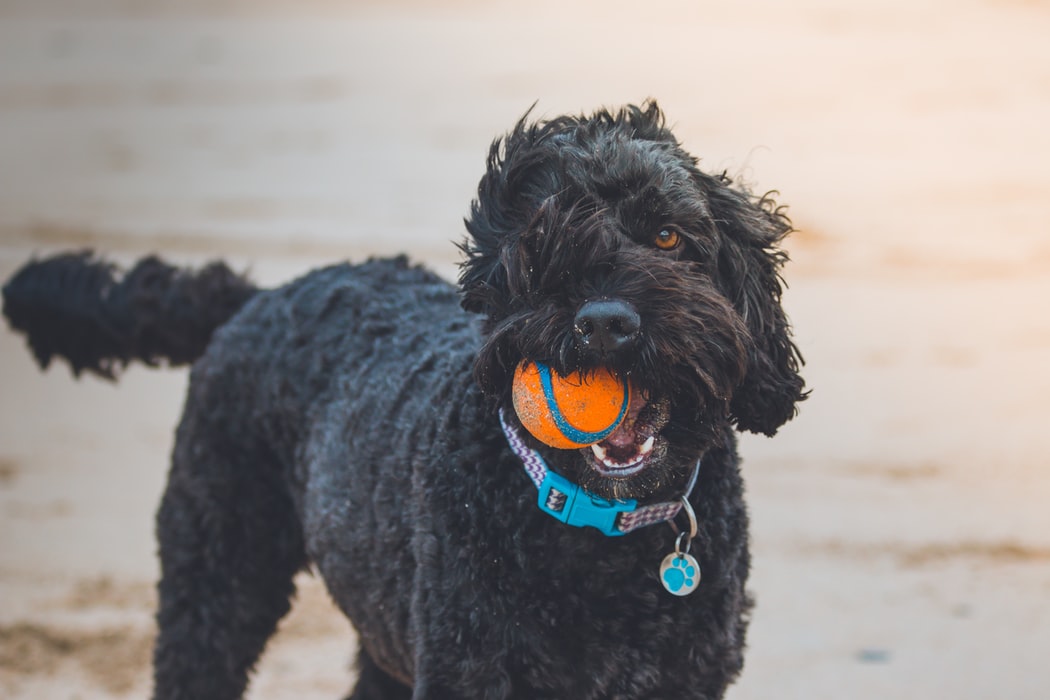
In today’s fast-paced world, it can be difficult for people to find time for self-care and exercise. If you imagine how hard it is to keep track of simple personal staples like that, it’s understandable that people sometimes overlook the importance of exercise for their pets as well. Just as regular workouts have numerous benefits for us humans, mental and physical exercise has a profound effect on the health and quality of life of our favorite friendly critters.
With the popularity of purebred dogs in America at an all time high, it’s no wonder that the prevalence of heart disease, eye disorders, cancers, hip dysplasia, and other dysfunctions are on the rise. Though purebred canines are more susceptible, all dogs are at risk when it comes to the dangers of obesity and a lack of sufficient exercise and mental stimulation. And dogs aren’t the only ones at risk. There’s been a sharp increase in cats facing diabetes and obesity as well.
These disorders aren’t usually present in younger pets, but they’re not uncommon as pets age. While a good number of these issues are linked to the genetics of your pet, it’s possible to delay and alleviate them with a good diet and regular exercise.
The type and method of exercise is limited only by the imagination, and maybe what you and your pet are capable of. While there are plenty of parallels between people and animals in regards to the benefits of exercise, you’ll definitely want to take into account factors such as breed, age, and environment before picking a new routine for your household friend.
Walks

Short walks are better than no walks, but typically they won’t raise your dog’s heart rate enough to get a full cardio workout. Longer walks might be good for older dogs, or pets that have a harder time breathing. For older dogs, joint pain and exhaustion are things you need to be aware of, so be sure to pay close attention to any signs that your dog might be tiring out.
For brachycephalic dogs, or pups like Boston terriers, pugs, and frenchies, vigorous exercise is sometimes difficult because they can’t breath well enough to support it. While they should still exercise, and you’ll likely be accustomed to a good deal of snorting and grumbling, be careful to note any labored breathing.
Running

If you’re looking for an efficient way to address your own physical health as well as your dogs’, running is a great way to both exercise and build a training relationship with your dog. Running provides an aerobic workout for the both of you, and it acts as mental stimulation for your pet as you lead the run and travel around you area. Of course, just like you wouldn’t hop off the couch and into a marathon, your dog will need time to acclimate to longer or more strenuous runs.
Dogs are particularly prone to overexertion, and breeds that are sociable or eager to please may push past their own limits if their owner is still going. For younger dogs, this may even be a greater risk, as some dogs may experience an urge to follow to the point of severe exhaustion or dehydration. So while running is an excellent way to get you and your pet into shape, it’s best enjoyed in moderation.
Swimming

Many breeds of dog love water, and with some training, most dogs can be proficient swimmers. Swimming is provides exceptional aerobic and resistance exercise, while being gentle on your dog’s joints. If you’re familiar with retrievers, labs, and other water loving pups, you’ve probably seen them launch full speed into the nearest lake, pond, or muddy pit of water without the slightest provocation.
Swimming is a good exercise, but as always, take care that your dogs aren’t diving into dirty water or places that aren’t safe to swim for other reasons. Ocean currents, strong rivers, and particularly shallow areas can pose the same risks to dogs that they would to people trying to swim in the same spots. You may also want to be sure that your dog doesn’t drink too much of that water. Between salt water and potential waterborne bacteria, not everything is a refreshing drink.
Training Related Exercises

For people with a bit more time in their schedule, or people that don’t mind dropping their pets off at a sort of dog training camp/class, objective oriented training and exercise is another possible way to keep dogs healthy. If you live out in the country and have an actual need for working dogs, then this is essentially how they get their exercise. But, if you’re not quite a farmhand in need of herding sheep and other livestock, you can still benefit from some of the same routines of running, herding, and command exercises to keep your dog in shape.
Alternate Methods

If you’re truly strapped for time, but still happen to be caring for a furry friend, the most important thing is finding alternate outlets for your dog’s energy. Doing so allows your dog to stretch and get exercise when they can. Doggy day cares are a good choice, as they often have a good deal of space, and it’s a good opportunity for your dog to socialize with other pets in a controlled environment. For a less controlled, but more personal touch, dog parks can provide a similar experience. In many cases, playing with your dog can be a good amount of exercise so long as you actually engage them in whatever activity you choose. Keeping them active is the main goal, after all.
Exercise For Cats

Cats aren’t exempt from exercise! Similar to dogs, too much of a sedentary life can be bad for your cat’s health down the road. Both physical and mental stimulation are key to providing a healthy environment for your cat. Of course cats aren’t quite as straightforward. While some are walkable or friendly enough to exercise like dogs, most cats would fight tooth and nail against a leash. For cats, entertaining them by getting them to chase things around the house, playing fetch, or just making sure they’re not indulging their 20 hour sleep schedule too much are all good ways to keep them active. Younger cats are fairly good about keeping active, which naturally keeps their muscles and joints in shape, but for older cats you’ll need to be mindful of their exercise needs.
While these recommendations are a great start, remember to keep your pets age and physical condition in mind. If there’s something that prohibits your pet from being more active, consider consulting your vet on ways to improve their daily health and routine. And as pets age, their bones, joints, and muscles might react differently to exercise, and certain health conditions might further alter their ability to perform certain tasks. Still, keep your pets active and engaged! Match a healthy diet to their daily routines, try and get them the exercise that they need, and hopefully they’ll keep you happy and healthy in return.


